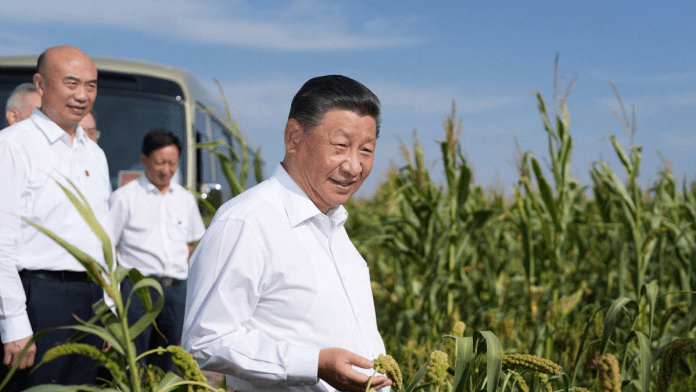News in brief:
– China has released a rural policy document emphasising on boosting agricultural output, particularly increasing per-unit yield to address food security and agritech self-reliance.
– The blueprint outlines plans for soybean expansion, intensified seed research, and prioritiwes boosting farmers’ incomes to prevent a return to poverty.
In a comprehensive rural policy document released by the State Council, China has outlined its commitment to bolstering agricultural output and advancing seed research. The nation, which holds the title of the world’s largest grain producer and consumer, aims to address food security and agritech self-reliance as top priorities.
China’s grain harvests reached a record 695.41 million tonnes last year, with output consistently surpassing 650 million tonnes since 2015. The blueprint emphasises the stabilisation of the country’s grain-planting area and the goal of ‘significantly increasing per-unit yield.’
Despite these achievements, the reliance on imports for specific crops necessitates a strategic approach.

Focus on seed research
Acknowledging changing consumer demands, the policy document vows to expand the cultivation of high-yield oilseed varieties, particularly soybeans. Incentives for farmers led to increased soybean cultivation last year, but the yield per unit for key products remains below the global average. The document sets the tone for increased efforts to improve yield and reduce dependence on imports.
Recognising seed research as a crucial aspect of food security, China plans to intensify efforts to develop “independent and superior” seed varieties. The country has faced challenges in this area, especially in light of tensions with the West. Genetically modified corn and soybeans have gained approval, aligning with China’s drive to enhance production and decrease reliance on overseas markets.
The blueprint highlights the commitment to boosting farmers’ incomes, preventing a return to poverty, and supporting rural revitalisation efforts. This becomes crucial as post-Covid economic recovery affects living standards, particularly in rural low-income groups. The government aims to stabilise employment for those lifted out of poverty, emphasising industrial and employment support.



